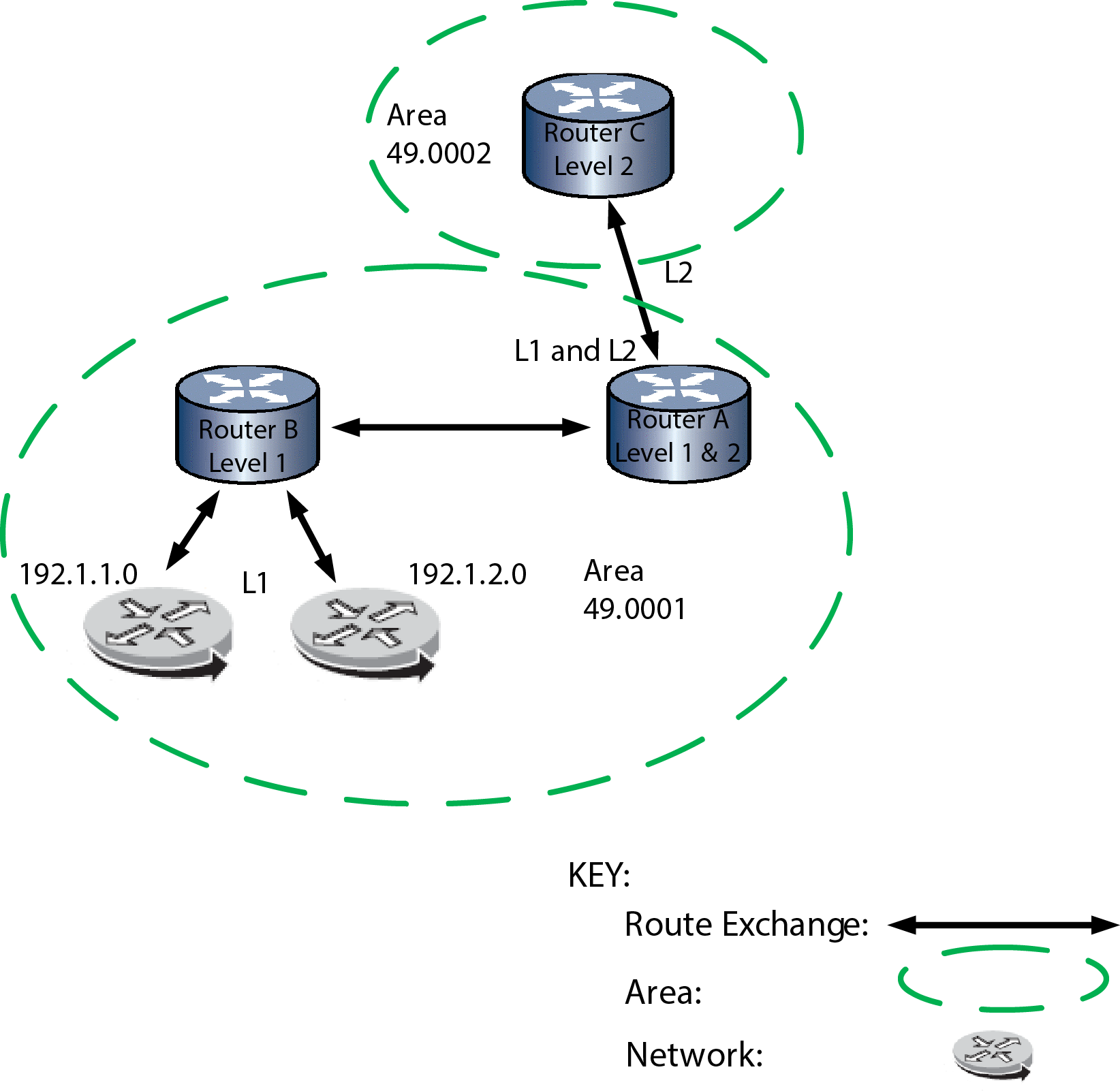Summarizing addresses reduces the number of LSPs and the size of the link state database. Multiple addresses can be summarized for a given IS-IS instance.
To summarize a unicast IPv6 address, you must be in the IPv6 unicast family address configuration mode. See Configuring the IPv6 Unicast Address Family to enter IPv6 unicast family address configuration mode.
In IS-IS, routes are leaked from Level 1 to Level 2, on intermediate systems running both Level 1 and Level 2. The summary address command aggregates the addresses that are leaked from Level 1 and Level 2.
In IS-IS Route Summarization, Router A is running Level 1 and Level 2. Router B is running Level 1 and Router C is running Level 2. Router A learns networks 192.1.1.0 and 192.1.2.0 through Level 1 IS-IS from Router B. Without a route summary, they are leaked to Level 2 and flooded to Router C as 192.1.1.0 and 192.1.2.0.

The following lines are configured on Router A:
S Chassis(rw)->configure S Chassis(rw-config)->router isis S Chassis(rw-config-isis)->summary-address 192.1.0.0/16 S Chassis(rw-config-isis)->
Now Router A will leak summary 192.1.0.0 to Router B but will not flood routes 192.1.1.0 and 192.1.2.0. A summary is only flooded if there is at least one Level 1 route that falls into the configured summary address range.

 Print
this page
Print
this page Email this topic
Email this topic Feedback
Feedback